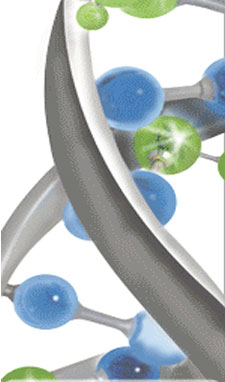|
 DRUG CLASS AND MECHANISM:
DRUG CLASS AND MECHANISM:
Naproxen belongs to a class of drugs called nonsteroidal
antiinflammatory drugs (NSAIDs). Other members of this class
include ibuprofen (Motrin), indomethacin (Indocin), nabumetone
(Relafen) and several others. These drugs are used for the
management of mild to moderate pain, fever, and inflammation. They
work by reducing the levels of prostaglandins, chemicals that are
responsible for pain, fever, and inflammation. Naproxen blocks the
enzyme that makes prostaglandins (cyclooxygenase), resulting in
lower concentrations of prostaglandins. As a consequence,
inflammation, pain and fever are reduced. Naproxen was approved by
the FDA in December 1991.
 PREPARATIONS:
PREPARATIONS:
* Anaprox (tablets): 275 and 550 mg;
* Naprosyn (tablets): 250, 375, and 500 mg;
* Naprosyn suspension: 125 mg/5ml;
* EC-Naprosyn: 375 mg,
* Aleve: 220 mg;
* Naprelan (controlled-release tablets): 375 and 500mg.
 PRESCRIBED FOR:
PRESCRIBED FOR:
Naproxen is used for the treatment of mild to moderate pain,
inflammation, and fever.
 DOSING:
DOSING:
The usual adult dose is 250-500 mg twice daily using regular
naproxen tablets. The usual dose for Naprelan controlled release
tablets is 750 to 1000 mg given once daily. For EC-Naprosyn, the
usual dose is 375-500 mg twice daily. Naproxen should be given
with food to reduce upset stomach.
 DRUG INTERACTIONS:
DRUG INTERACTIONS:
Naproxen is associated with several suspected or probable
interactions that affect the action of other drugs. The following
examples are the most common suspected interactions.
Naproxen may increase the blood levels of lithium (Eskalith) by
reducing the excretion of lithium by the kidneys. Increased levels
of lithium may lead to lithium toxicity.
Naproxen may reduce the blood pressure lowering effects of blood
pressure medications. This may occur because prostaglandins play a
role in the regulation of blood pressure.
When naproxen is used in combination with methotrexate or
aminoglycosides (for example, gentamicin) the blood levels of the
methotrexate or aminoglycoside may increase, presumably because
the elimination from the body is reduced. This may lead to more
methotrexate or aminoglycoside-related side effects.
Individuals taking oral blood thinners or anticoagulants [for
example, warfarin, (Coumadin)] should avoid naproxen because
naproxen also thins the blood, and excessive blood thinning may
lead to bleeding.
 PREGNANCY:
PREGNANCY:
There are no adequate studies of naproxen in pregnant women.
Therefore, naproxen is not recommended during pregnancy.
NURSING MOTHERS: A small amount of naproxen is excreted in breast
milk. Because the concentration in breast milk is low,
breastfeeding while taking naproxen probably is not harmful to the
infant.
 SIDE EFFECTS:
SIDE EFFECTS:
The most common side effects from naproxen are rash, ringing in
the ears, headaches, dizziness, drowsiness, abdominal pain,
nausea, diarrhea, constipation, heartburn, fluid retention and
shortness of breath.
|






